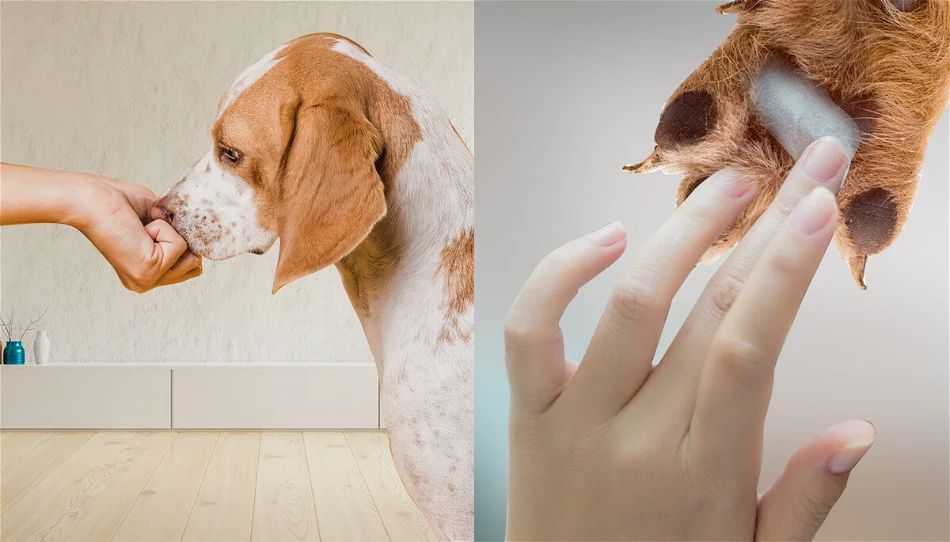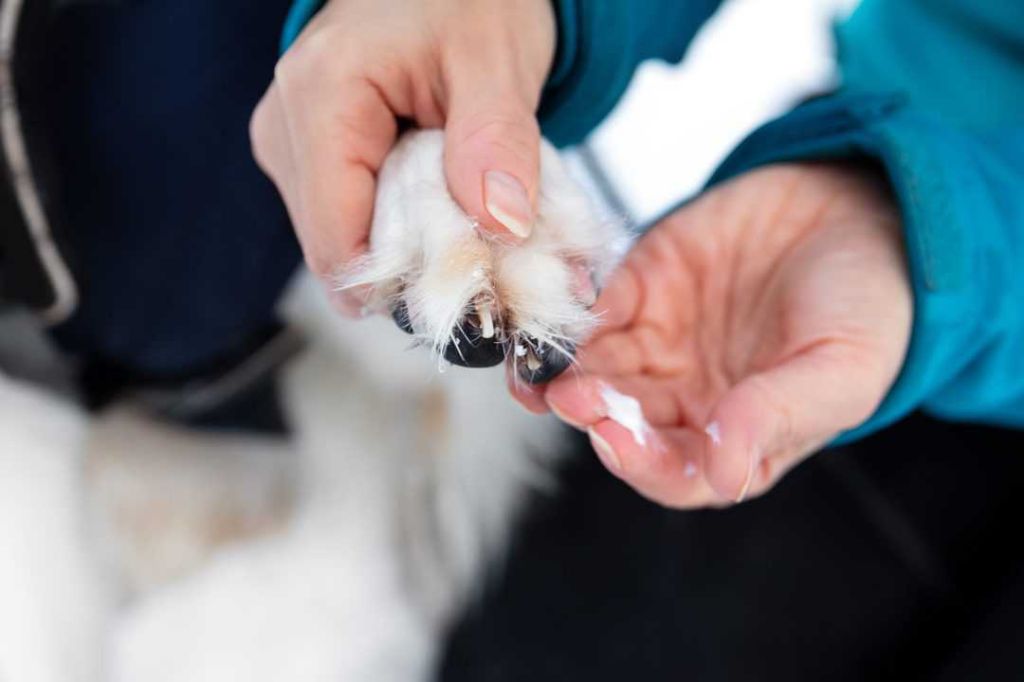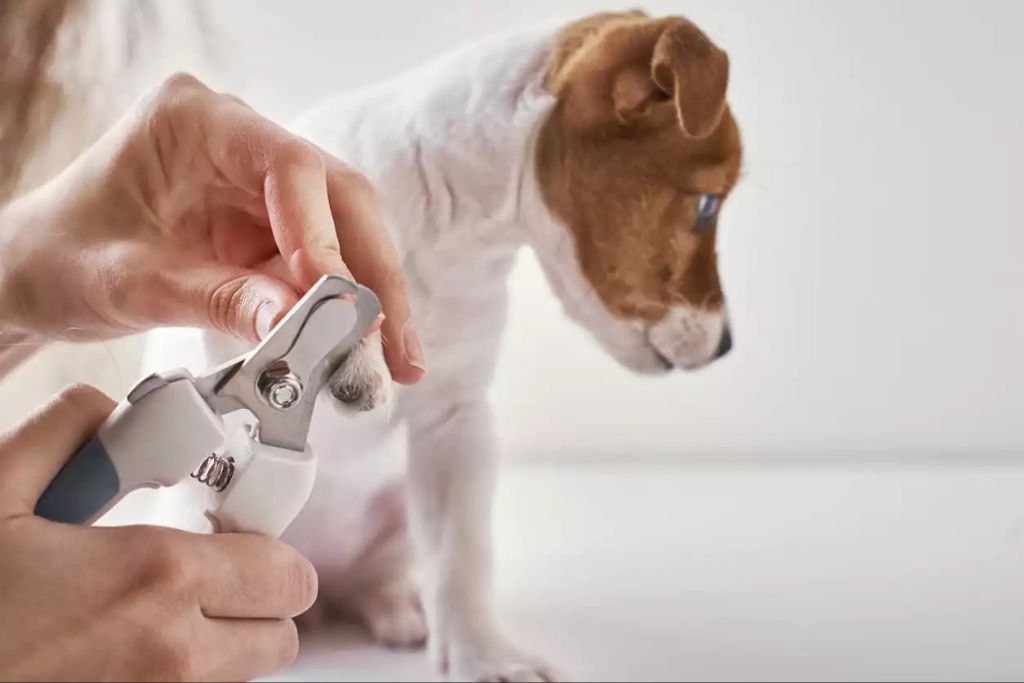Introduction
Nail bleeding is a common issue for dog owners when trimming their pet’s nails. It occurs when the nail is cut too short, hitting the quick or blood vessel inside. While startling, minor nail bleeding is usually not an emergency. However, severe or prolonged bleeding can be dangerous and requires prompt treatment.
The most frequent causes of nail bleeding are overtrimming by owners, injuries from outdoor activity, and nails splitting or breaking. While bleeding often stops on its own, it’s still vital to have the right knowledge on treating it properly and when to seek veterinary assistance.
This article provides dog owners comprehensive information on recognizing, treating, and preventing nail bleeding episodes. It offers actionable advice on home remedies like Vaseline as well as professional treatment guidance. The goal is to equip owners to handle this situation with confidence and avoid complications.
Signs of Nail Bleeding
There are a few common signs that indicate your dog may have a nail that is bleeding:
- Blood pooling around the nail – You may notice blood dripping from the nail or collecting on the floor around your dog’s paw. This is a clear indication that the nail is damaged and bleeding.
- Nail breaking and bleeding – If you see the nail itself cracked open and bleeding, this is an obvious sign of nail bleeding. The break may be partial or go all the way to the quick.
- Limping/licking paw – Your dog may start limping on the paw with the damaged nail and excessively licking at it as well. This occurs because the bleeding and break cause pain and discomfort.
If you observe any of these signs, inspect your dog’s nails closely to identify the source of bleeding. Look for cracked nails or nails that appear trimmed too short. Quick action is important to stop the bleeding and prevent further blood loss.
Causes of Nail Bleeding
There are a few main causes of nail bleeding in dogs:
- Overly long nails – When a dog’s nails grow too long, the quick can extend out with the nail. This makes it more likely for the quick to be hit when trimming.
- Injury to nail bed – Direct trauma to a nail, such as getting stepped on or caught in something, can cause bleeding. This can rip the nail or damage the quick (source: https://toegrips.com/dog-split-nail/).
- Infection – Bacterial or fungal infections in the nail bed can cause inflammation and bleeding. This usually requires medical treatment.

Keeping your dog’s nails trimmed regularly can help avoid overly long quicks and decrease the chances of injury. But even with cautious trimming, it’s still possible for bleeding to occur.
Dangers of Nail Bleeding
Nail bleeding in dogs can be dangerous if left untreated. The two main risks are infection and pain/discomfort.
When a nail is damaged or ripped off, it exposes the quick which contains blood vessels and nerves. This open wound is vulnerable to bacteria which can enter and cause infection. Signs of infection include pus, redness, swelling, and the dog licking or chewing at the nail. Infections should be treated promptly by a veterinarian with antibiotics or antiseptics as they can spread and become serious (Source 1).
Nail bleeding is also extremely painful for dogs as there are many nerve endings in the quick. The exposed quick when a nail breaks can cause severe pain and discomfort. Dogs may limp, lick excessively at the nail, whine, or act withdrawn. Providing pain relief medication is important for the dog’s welfare. If the nail is partially detached it may catch on objects causing more pain. Leaving nail injuries untreated allows ongoing suffering for dogs (Source 3).
Treating Mild Nail Bleeding
If your dog experiences mild bleeding after trimming their nails, there are some simple at-home treatments you can try before seeing the vet. The most important first step is to trim the nail properly – cut below the quick just until you see a sliver of pink, but not deep enough to cause heavy bleeding. Use sharp trimmers made for dogs to avoid crushing the nail.
After trimming, the first line of defense is styptic powder, a must-have for any at-home grooming kit. Styptic powder contains ingredients like potassium aluminum sulfate or ferric subsulfate that contract blood vessels and stop bleeding (source). Apply styptic powder directly to the nail’s cut surface and hold for 30-60 seconds. The bleeding should stop quickly.
If you don’t have styptic powder on hand, make a paste with baking soda and water and apply it to the nail to clot bleeding (source). You can also wrap the nail in a bandage or gauze to put pressure on the area and control mild bleeding.
Treating Severe Nail Bleeding
If home treatments are not able to stop the bleeding, it’s important to seek veterinary care as soon as possible. Severe nail bleeding often requires medications or procedures that only a vet can provide.
Vets may administer a sedative to calm the dog and reduce blood pressure, allowing the bleeding to slow. Antibiotics may also be prescribed to prevent infection in the nail bed. In severe cases where the nail is partially or fully torn off, surgery may be necessary to remove the damaged part of the nail and cauterize the wound. This helps stop bleeding while allowing healthy nail to regrow (The Village Vets).
Veterinarians also have access to powerful coagulant medications that promote rapid clotting. These drugs are much stronger than over-the-counter products and can stop bleeding that has not responded to other remedies. IV fluids may be given to stabilize blood pressure and prevent shock.
While home treatment can be attempted initially for nail bleeding, if bleeding persists for more than 10-15 minutes or seems severe, immediate veterinary care is vital. With medications, sedation, surgery, and IV support, vets can stop bleeding and allow the nail to heal in the healthiest way possible.
Can Vaseline Help?
Vaseline (petroleum jelly) can help stop nail bleeding in dogs by sealing and protecting the wound. When applied to a bleeding nail, Vaseline creates a protective barrier that stops bleeding and prevents bacteria from entering the wound. Some pros of using Vaseline for dog nail bleeding include:
- Readily available in most homes
- Inexpensive
- Easy to apply
- Helps stop bleeding quickly
- Soothes pain and prevents irritation

However, there are also some potential cons to be aware of:
- Can be messy and get stuck in dog’s fur
- Needs to be reapplied frequently
- Doesn’t disinfect the wound
- May not be as effective for severe bleeding
Compared to other common home remedies like flour, cornstarch or baking soda, Vaseline is more effective at quickly sealing the wound. However, styptic powders also help disinfect, so may be a better option for severe nail bleeding. Overall, Vaseline can be a good emergency remedy, but severe bleeding will still require veterinary attention.
According to veterinarians, Vaseline is generally safe for dogs when used externally (source). However, it’s important not to overuse it, and contact your vet if bleeding persists. For mild nail bleeding or injury, Vaseline can help protect the wound site, but more serious bleeding requires proper medical treatment.

How to Apply Vaseline
If your dog’s nail is bleeding mildly from a trim, Vaseline can help stop the bleeding. Here are the steps to follow:
First, clean the nail to remove any debris or dirt. Use a dog ear cleaner or gentle soap and water to rinse the nail area.
Apply a very small amount of Vaseline to the tip of the nail where it is bleeding. Only use a tiny bit – too much Vaseline may cause more harm than good. The Vaseline helps clot the blood and protect the nail bed.
Next, wrap the paw in clean bandages or gauze to keep the Vaseline on the nail. Make sure not to wrap too tight – you don’t want to cut off circulation. The bandage should allow for normal paw movements but keep the Vaseline in place. Monitor the bandage periodically.
The Vaseline bandage can be kept on for several hours until the bleeding fully stops. Then gently remove the bandage and reapply Vaseline if needed. Keep the nail area clean while it continues healing.
If bleeding persists despite Vaseline, you may need veterinary care. Severe nail bleeding often requires cauterization or an antibiotic ointment prescribed by your vet.
When to See the Vet
In most cases, mild bleeding from a trimmed nail will stop on its own within 5-10 minutes with proper first aid. However, in some situations, you will need to take your dog to the veterinarian for treatment.
Excessive bleeding that cannot be controlled after applying pressure for over 20-30 minutes is a sign that proper clotting is not occurring and requires veterinary assistance. Prolonged bleeding can lead to blood loss anemia in severe cases, so do not wait to seek help if applying standard first aid does not stop the bleeding.
Signs of infection around the nail, including redness, swelling, discharge, or a foul odor indicate a bacterial infection may be present. This requires prescription oral antibiotics and topical treatments to clear up. An infected nail can quickly become very painful for your dog, so don’t delay in getting veterinary care.
If your dog seems to be in persistent pain or is limping on the paw more than a day after the nail trim, this suggests possible damage to nail bed. Your vet can examine the paw and nail bed to diagnose any injury and provide appropriate pain medication or other treatment.
It’s always better to consult your vet if you have any concerns about persistent bleeding, signs of infection, or lameness after clipping your dog’s nail. Getting prompt professional attention will help prevent any complications and minimize your dog’s discomfort after a nail trim accident.
Preventing Nail Bleeding
There are a few ways to help prevent nail bleeding from happening in the first place:
Regular nail trims – Keeping your dog’s nails trimmed regularly is key to avoiding overgrown nails that are more prone to bleeding when cut. Aim to trim every 2-4 weeks. Use sharp trimmers and take small amounts off at a time.[1]

Exercise on hard surfaces – Allowing your dog to walk and run on sidewalks, roads, and other hard surfaces can help wear their nails down naturally between trims. The impact helps blunt the sharp edges.[2]
Nutrition – A healthy diet contributes to strong nails that are less prone to cracking and overgrowth. Make sure your dog gets enough vitamins/minerals like calcium, zinc, and omega-3s.[3]
